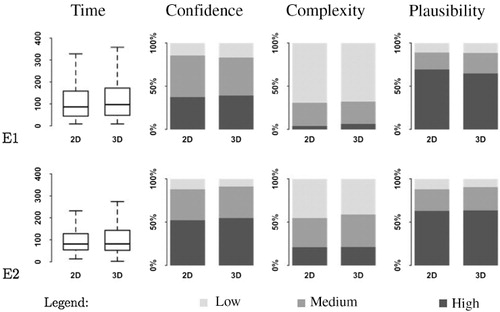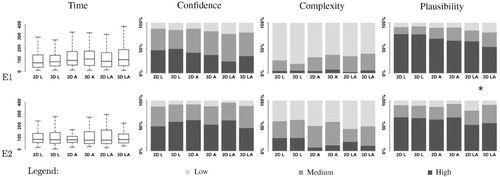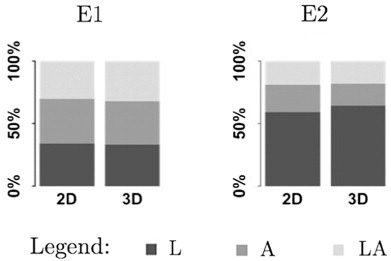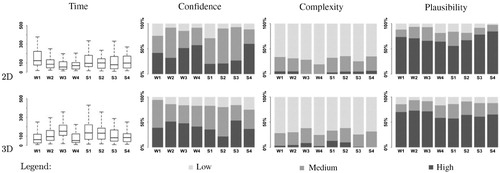Figures & data
![Figure 1. Quantitative data and map background (1:25000 © 2014 swisstopo [BA14010]) of the eight different settings (W1–W4, S1–S4) in the 2D (HTML, SVG, and JavaScript, left pairs) and 3D (Google Earth, right pairs) settings.](/cms/asset/fcd9cddf-469f-4923-9f36-a26583543ddd/tjde_a_927536_f0001_oc.jpg)
Table 1. Directed exploratory tasks for Experiment E1 (tasks E1.1–E1.7) and Experiment E2 (task E2.1) referring either to location (L) or, altitude (A), or a combination of location and altitude (LA).
![Figure 2. Quantitative data and map background (1:25000 © 2014 swisstopo [BA14010]) of the two different settings (W and S) either in 2D (HTML, SVG, and JavaScript) or 3D (Google Earth).](/cms/asset/7c5db907-915f-4c5b-adb1-4589fb585960/tjde_a_927536_f0002_oc.jpg)
Table 2. Word categories used to classify an answer/insight into either referring to location, altitude, or a combination of both.



![Figure 6. Comparison of relative quantities of reference set usage (location L, altitude A, or both LA) in the insights reported in E1 compared to the task references (tasks referring to location [tL], tasks referring to altitude [tA], and tasks referring to a combination of location and altitude [tLA]).](/cms/asset/405ce2a1-5d2e-4733-a5a7-e52ecbd9d717/tjde_a_927536_f0006_b.jpg)


